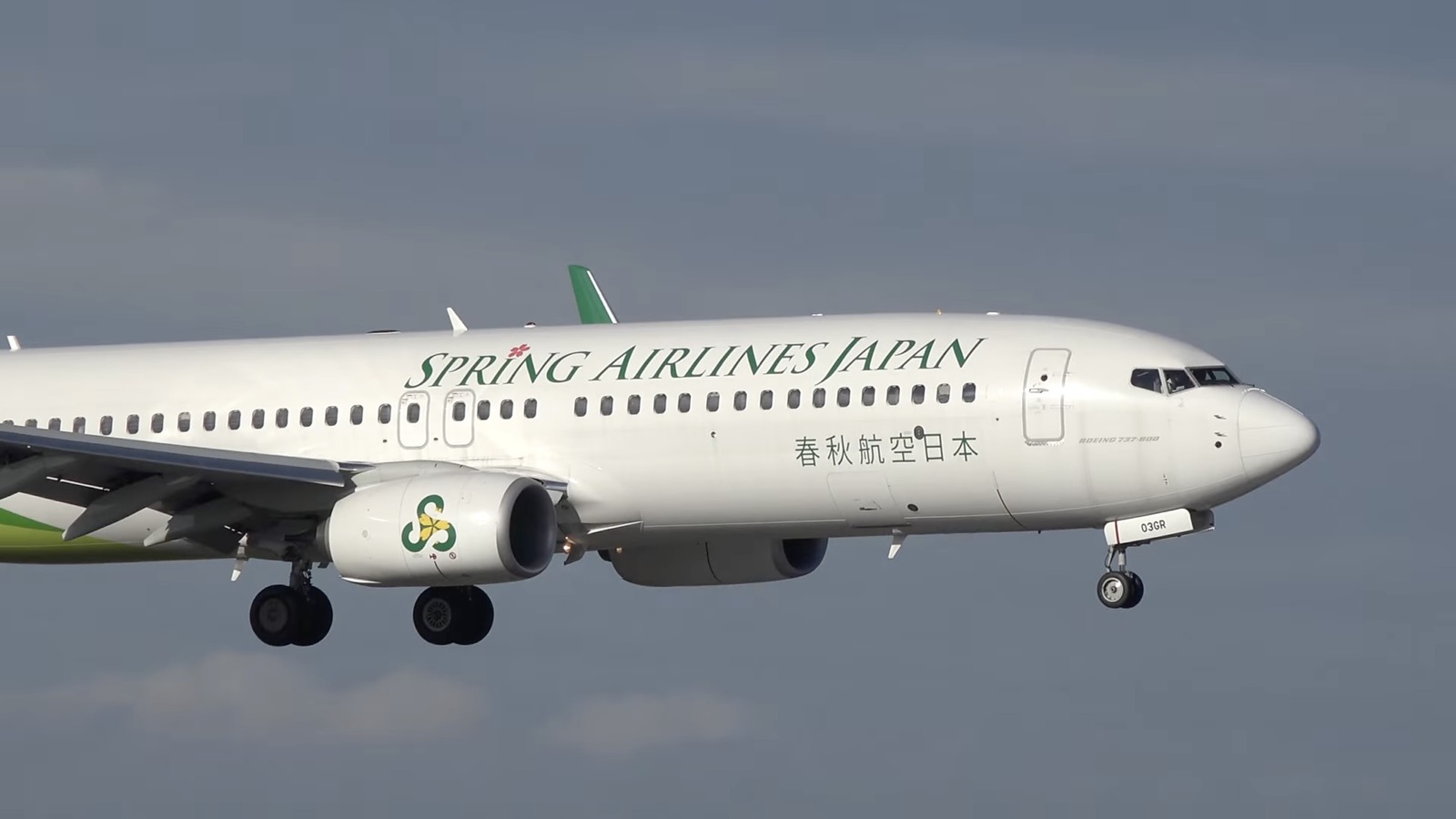
Passengers had a wild ride on a Spring Airlines Japan flight that appears to have suffered from a cabin pressurization issue on Monday evening. Data from FlightRadar24 shows that flight JL8696 out of Shanghai, China, was cruising at 36,000 feet. At 6:51 pm local time, the Boeing 737-800 briefly rose, then rapidly descended to 10,000 feet over the next ten minutes. It then made an emergency landing at Kansai International Airport near Osaka, Japan. No injuries were reported for the 191 passengers and crew, according to Simple Flying. It doesn’t look like anyone threw out the door plug bolts on this one.
While there may have been no physical injuries, it was a harrowing experience for all on board. The Standard reports that flight attendants appeared to be holding back tears as oxygen masks deployed and the plane plunged toward the ocean. One passenger even wrote a note to her husband to say goodbye during the rapid descent, fearing the worst. People tells of another passenger writing their will, along with insurance and banking info.
We’re all fine here now, thank you, how are you?
As scary as the experience must have been for the passengers, the flight crew appears to have done everything correctly and by the book. Cabin pressurization is what makes high-altitude and high-speed flight possible. Losing this pressurization requires descending from cruising altitude, where there isn’t enough oxygen in the thin air to remain conscious, to 10,000 feet, where there is, as quickly as it is safe to do so without overstressing the airframe.
Some simple math tells us that descending from 36,000 to 10,000 feet is a change of 26,000 feet in 10 minutes, which means a descent rate of 2,600 feet per minute. That’s fast, considering that a standard approach descends at 700 feet per minute. But it’s also not unheard of in an emergency, such as United Airlines Flight 510 which dropped 28,000 feet in 10 minutes due to a similar pressurization issue. A Korean Air flight dropped 25,000 feet in just five minutes for the same reason.
Though a bit extreme, this rapid descent is a standard operating procedure, as the above video demonstrates in a simulator. The pilots immediately put on their own oxygen masks, turn on oxygen for the passengers, then plunge to 10,000 feet while reducing throttle. These are memory items that pilots must know by heart and execute immediately when needed. Only toward the end of the video does the first officer reach for a manual to continue troubleshooting the problem.

